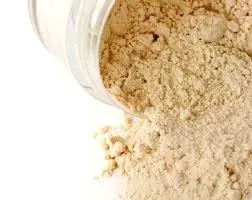Physicochemical Treatment of Wastewater A Comprehensive Overview
Wastewater treatment is an essential process in maintaining environmental sustainability and public health. Among various methods, physicochemical treatment stands out for its effectiveness in removing contaminants from wastewater. This approach integrates physical and chemical processes to purify water, making it suitable for discharge or reuse. This article explores the fundamentals, processes, and benefits of physicochemical treatment of wastewater.
Understanding Physicochemical Treatment
Physicochemical treatment involves the use of physical and chemical processes to remove pollutants from wastewater. This treatment is generally applied to industrial effluents and municipal wastewater that contains high concentrations of suspended solids, heavy metals, organic pollutants, and other harmful substances. The main objective of this treatment is to reduce the pollutants to acceptable levels, thereby protecting water resources and preventing pollution.
Key Processes in Physicochemical Treatment
1. Coagulation and Flocculation This process involves adding coagulants (such as aluminum sulfate or ferric chloride) to the wastewater, which destabilizes the colloidal particles. The destabilized particles aggregate to form larger clusters, known as flocs, which can then be removed from the water. Flocculation follows coagulation, where gentle mixing encourages the growth of these flocs.
2. Sedimentation After flocculation, the wastewater is allowed to sit in a sedimentation tank, where the heavier flocs settle to the bottom as sludge. This sludge can be further treated or disposed of. Clear water is then decanted from the top for further purification.
3. Filtration Filtration is employed to remove remaining suspended particles from the water. Various filters such as sand filters, activated carbon filters, and membrane filters can be used, depending on the composition of the wastewater and the desired quality of the treated water.
4. Chemical Precipitation This method is particularly effective in removing heavy metals from wastewater. By adding specific reagents, soluble contaminants can be converted into insoluble precipitates, which can be easily separated from the water through sedimentation or filtration.
5. Neutralization Wastewater often has a high or low pH, which can be harmful to aquatic life. Neutralization involves adding acids or bases to adjust the pH of the water to a neutral level, facilitating the subsequent treatment processes.
physico chemical treatment of wastewater

6. Advanced Oxidation Processes (AOPs) These techniques involve the generation of highly reactive radicals that break down organic contaminants, making them suitable for further treatment or direct discharge. AOPs can be particularly useful for treating recalcitrant compounds that are resistant to conventional methods.
Benefits of Physicochemical Treatment
The physicochemical treatment of wastewater offers several advantages
- Efficiency This method effectively removes a wide range of pollutants, including solids, heavy metals, and organic compounds, often achieving high levels of treatment in a relatively short time.
- Space-Saving Compared to biological treatment methods that require large land areas, physicochemical processes can be more compact, making them suitable for urban areas or facilities with limited space.
- Flexibility The integration of various processes allows for tailored treatment solutions that can address specific contaminants present in wastewater.
- Rapid Results Many physicochemical processes operate quickly, which is vital for industrial operations that require immediate treatment and discharge.
Conclusion
Physicochemical treatment is a vital component of modern wastewater management strategies. With increasing industrialization and urbanization, the demand for effective wastewater treatment solutions is more critical than ever. By combining physical and chemical processes, this approach not only enhances the quality of treated water but also contributes to the sustainability of water resources. As technology advances, ongoing research and development will continue to innovate and improve these processes, ensuring a cleaner and safer environment for future generations. The integration of physicochemical treatment in wastewater management systems represents a proactive step towards environmental responsibility and sustainable water use.

